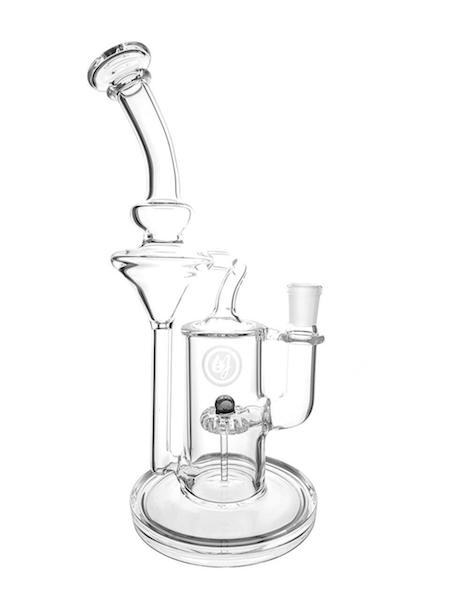What is a Recycler Rig? | Types of Recyclers
Posted by Jack Daniels (Edited by Jay Dreadhead) on 17th May 2015


When it comes to oils and concentrates, retaining as much flavor as possible is the key, and for many seasoned heads nothing on the market saves the flave quite like a recycler rig.
A recycler rig is a piece of functional glass that typically uses two chambers instead of just one, transferring the vapor from the first chamber to the second along a stream of cool water, delivering what many consider to be the smoothest hit you can get.
As with most rigs, it all starts with the percolator. Whether you prefer simple 1- or 2-hole diffusion, or if you like more froth like from an inline or matrix perc, The Dab Lab has got you covered with the hottest recycler rig options from today’s top artists like Leisure Glass, AFM Glass, Bare Glass, Mr. Flow Glass and more!
Using a recycler properly requires a longer, slower draw from the user, which can be a bit odd at first when combined with the added restriction that most recycler rigs have due to their design. But once you are used to it, the cyclical action taking place inside the rig will wow your friends while also delivering a perfect rip for you each and every time.
As the vapor moves through the perc, and into the water, that water is drawn through a tube from the first chamber to the second chamber, located closer to the user’s mouth. This long contact with the water constantly cools the traveling vapor as freshly recycled water continuously moves through both chambers of the rig.
Releasing the vapor from the stream of water just as it reaches the user’s mouth provides what many consider to be the truest, most flavorful hit that you can find. The recycling effect also serves as an effective splash guard, letting the water bring the vapor much closer to your mouth than most rigs will allow.
As an added bonus, the constant recycling action of the water leads to little or no dry glass space inside the chambers, giving pesky reclaim less surface area to stick to, keeping your rig a bit prettier between cleanings.
Some recycler rigs, especially those with simpler diffusion, will provide a whirlpool drainage effect between the chambers after each hit. Though it does not really add to the flavor or effects, it’s fun to watch!
Most recycler rigs feature a wide and sturdy base, making them ideal for use with electronic nails.
With so many options available these days, finding a recycler with a perfect balance of form and function can seem like a daunting task, but it’s never been easier here at TheDabLab.com where we bring the marketplace to you!
Give us a call today @ (650) 741-0144 and we will help you choose the perfect recycler to match your style. Or start browsing our recycler section now!
FUN FACT: Hamm Brushland is the inventor of the recycler and produces some of his design under the scientific company, Hamm's Waterworks.
Types of Recyclers:
Standard Recycler (External Recycler) - This type of recycler features a drain tube that connects from the top of the can of the rig to the bottom of the can. The tube is on the outside of the can creating a loop.

Internal Recycler (Incycler) - There are 2 types of incyclers. (1) One has an external tube that brings the water from the first chamber to the second where the drain is. The drain tube is on the inside of the can. (2) The other one, the water travels through small holes at the top of the drain funnel instead of traveling through an external tube.

Klein Recycler - This type of recycler features a "klein weld". They are like a hybrid of an external and internal recycler. They are designed like internal recyclers, but the drain doesn't just go straight down to the bottom of the can. It first exits the can and then loops back inside. The reason this is done is so the drain does not get in the way of the percolator. You don't want them to interfere with each other and a "klein weld" is the best way to make sure the doesn't happen.

Of course this is not every single type of Recycler in existence, but pretty much every recycler uses one of these three basic formulas.

